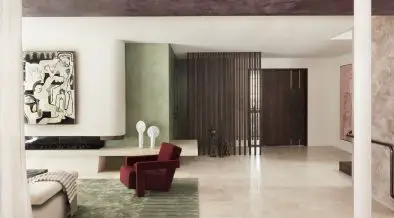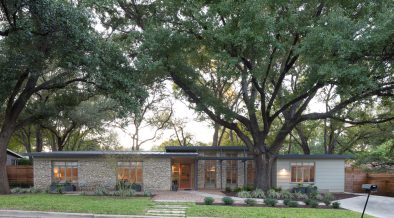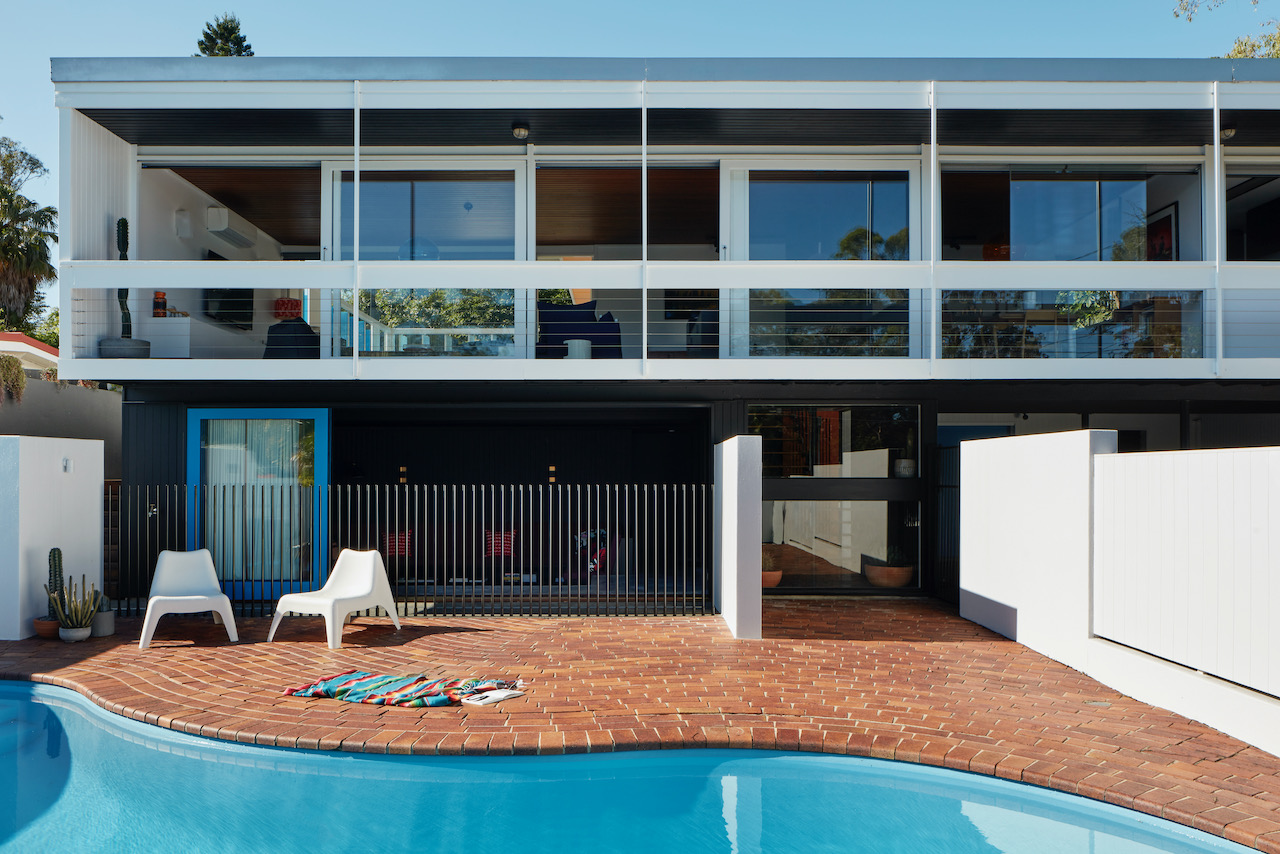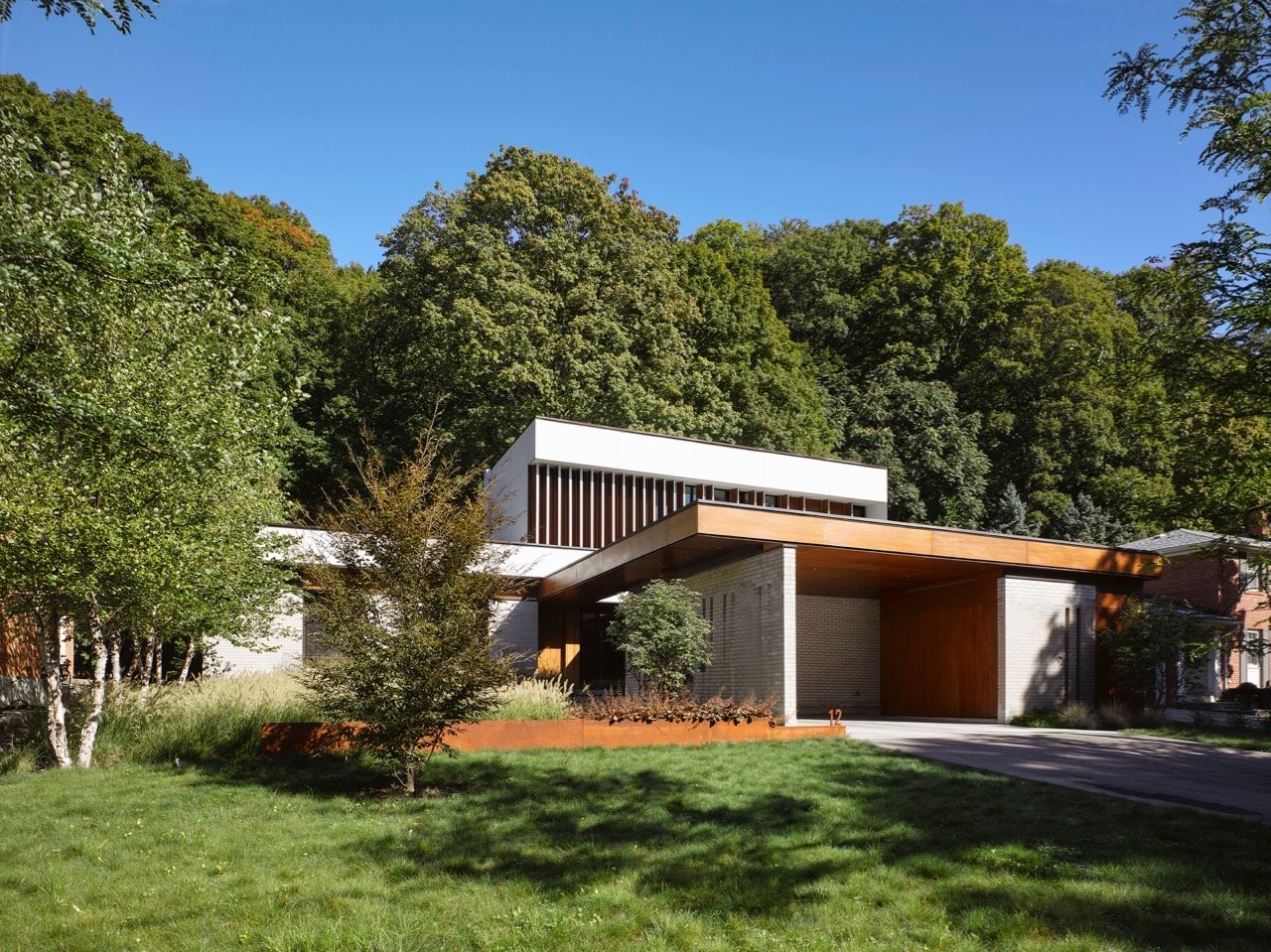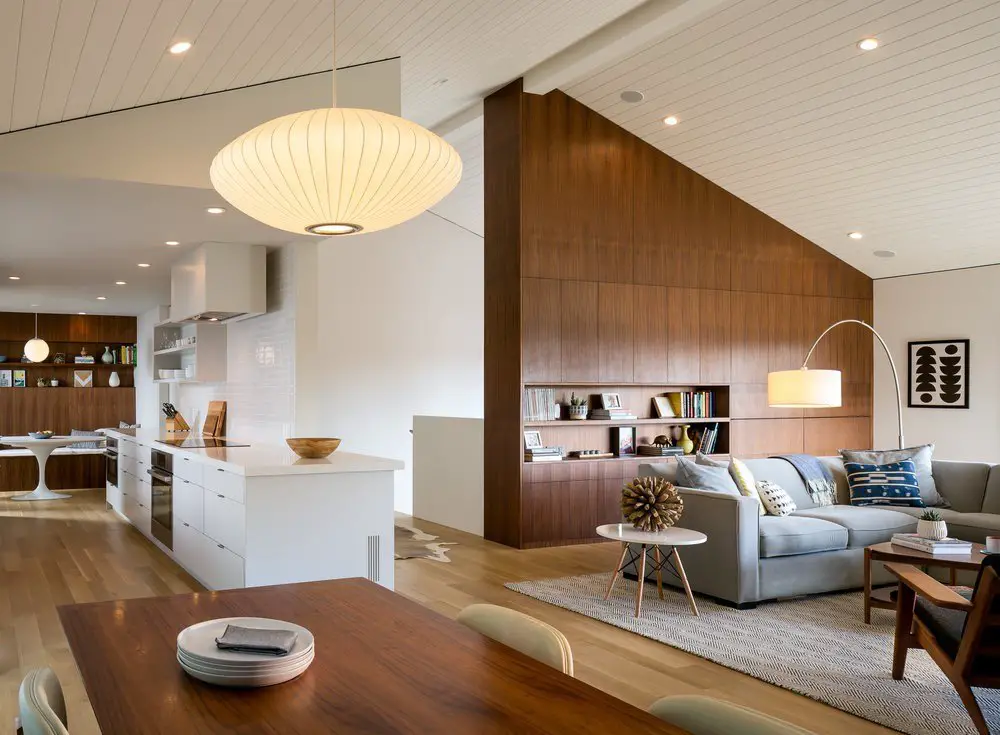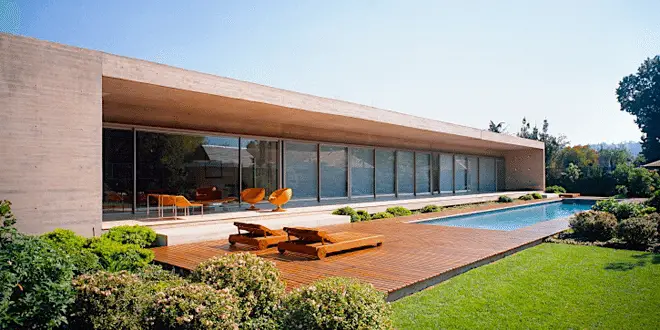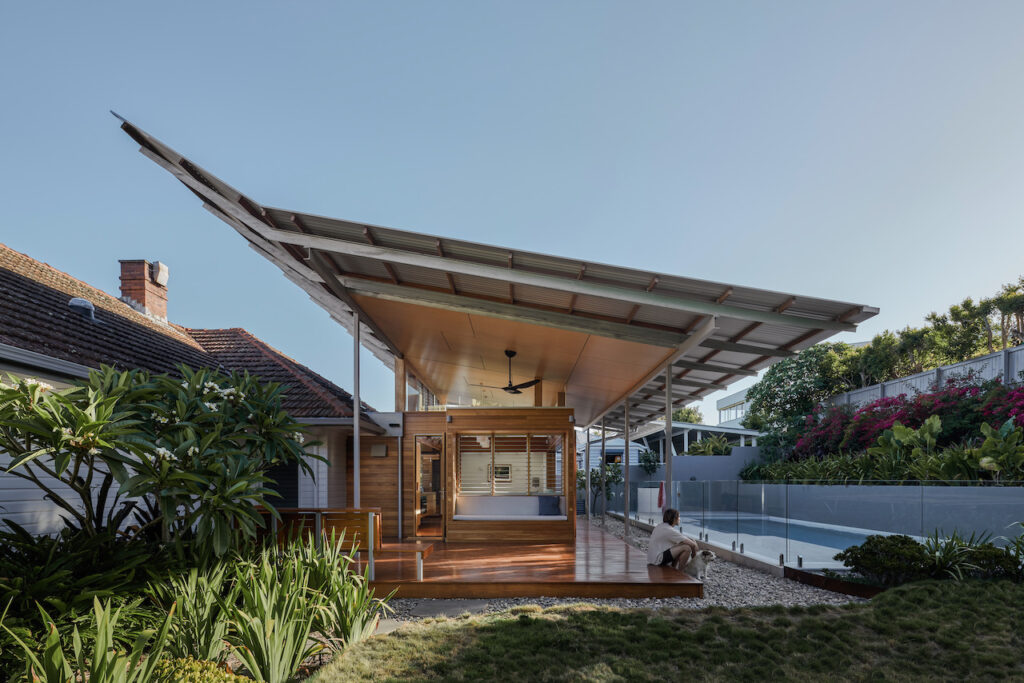
Text from Arcke Architecture and Interior Design
The ‘Cummings House’ in Alderley, Queensland was originally designed by architect Robert Cummings as his family home and built by J.M.Finlayson in 1936. Its architectural style represents a departure away from the more traditional, ornate timber and tin forms that dominated Brisbane housing styles in the late nineteenth and earlier twentieth centuries.
Robert Cummings was one of the founding fathers of the University of Queensland’s School of Architecture and is generally credited for bringing modernism to Queensland. Many of his modernist philosophies are evident throughout the house, adapted with sensibility for the local context and climatic condition.
The recent renovation, by Arcke Architecture & Interior Design, respects Cummings’ original design and draws cues from the refined simplicity of this heritage listed building.
The new homeowners were looking for a sympathetic modification of the interior spaces whilst adding additional space. They approached Arcke, as their design philosophy was a good match for the brief. Arcke’s intervention has celebrated the original modernist features, leaving the original idiosyncrasies of the existing house relatively untouched.
The addition of a striking and poetic pavilion to the rear is a symbiotic yet distinct work designed for contemporary living.
The roof form of the new pavilion references the original house, turning up to the northeast and down to the harsh western sun.
The pitch of the upturned form rises to meet the angle of the original tiled roof, to allow both to comfortably coexist. The wide, sheltering brim of the canopy is an external space of its own, protecting the jewelled box that is a modest timber room within.
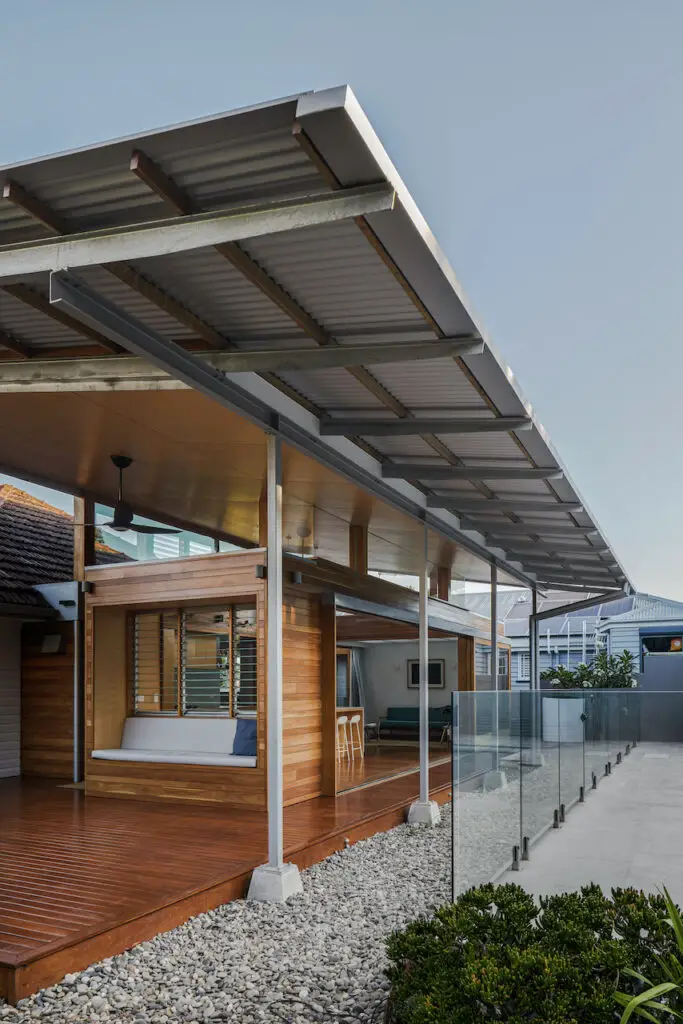
The street view of the house has remained, except to reinstate a slender stairwell pop-out to the southern elevation. Moving through the stairs, you seemingly transition from the inside to the outside at the half landing return, where views of the landscaping and beyond are beautifully framed.
The landscaping was envisioned to create a symbiotic relationship with the architecture and the planting provides stunning vistas that increase wellbeing and joy.
The new structure sits on the site of a previous rear deck extension, sustainably containing the envelope. By building less and interpreting spatial relationships, the quantity of materials and waste was minimised.
Reinterpreting space, instead of building more, has allowed an efficient outcome for the new owners in terms of cost and value.
Sustainability was important when selecting materials, with natural, recyclable elements chosen specifically for their quality and longevity.
Timber for the cladding and interiors and complementary steel to create the floating roof of the lightweight pavilion. The transparency between spaces and levels, capturing northern views and breezes, was achieved through the detailed articulation of openings between areas.
Long views now exist where previously walls inhibited cross ventilation. The transparency also provides a wonderful quality of light and cross ventilation throughout the house whilst further reducing energy consumption.
Although the house still sits on generally the same footprint, it now provides the space the family needed and will see them well into the future, whilst paying all due respects to the past.
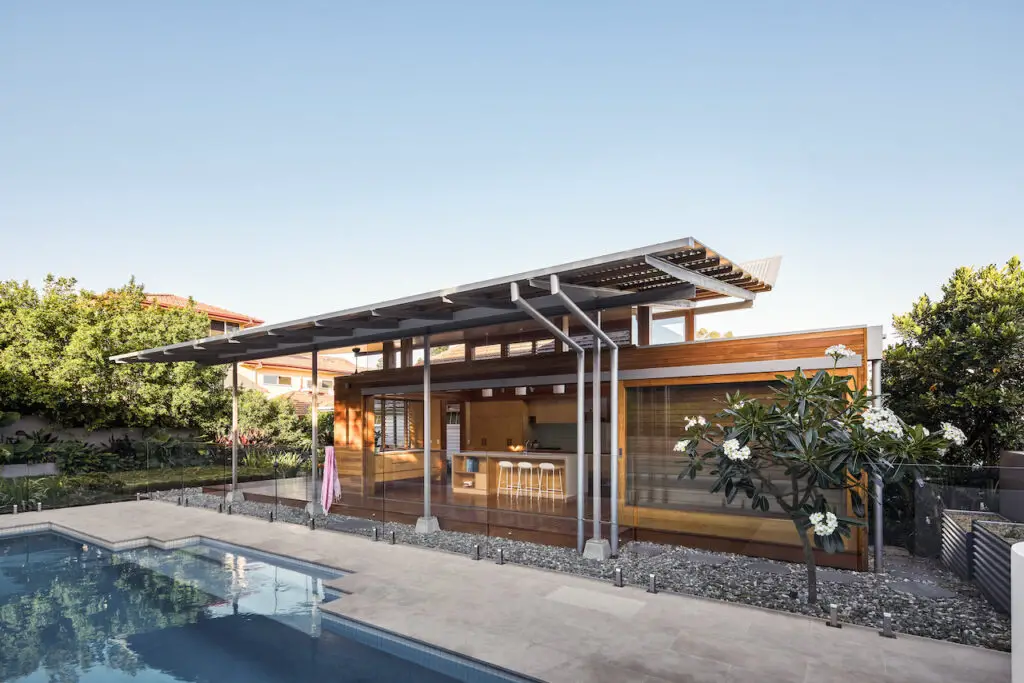
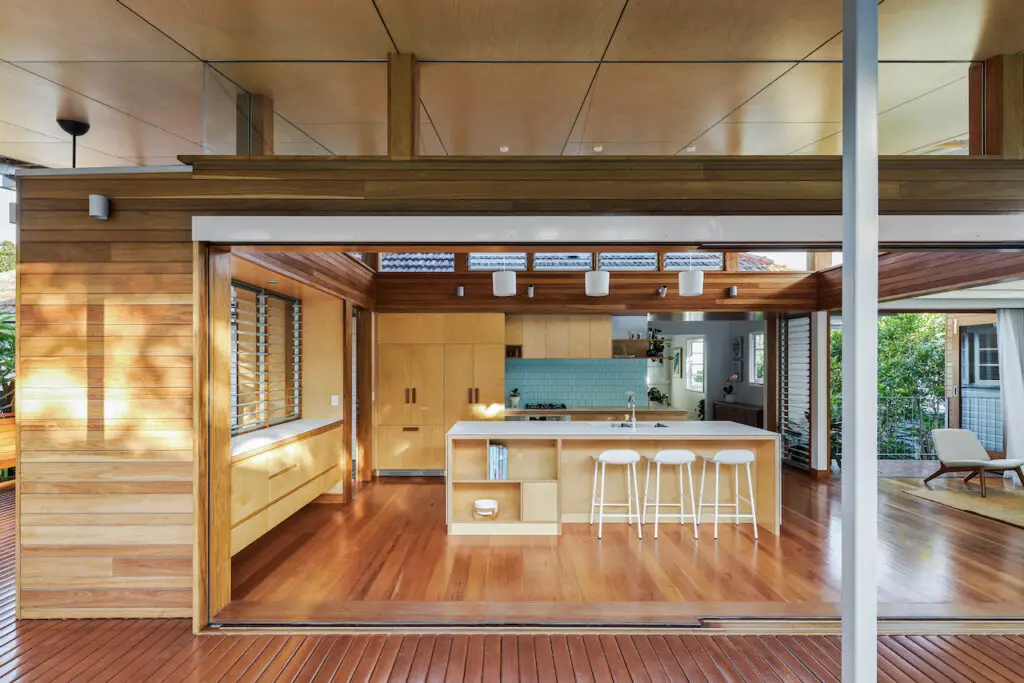
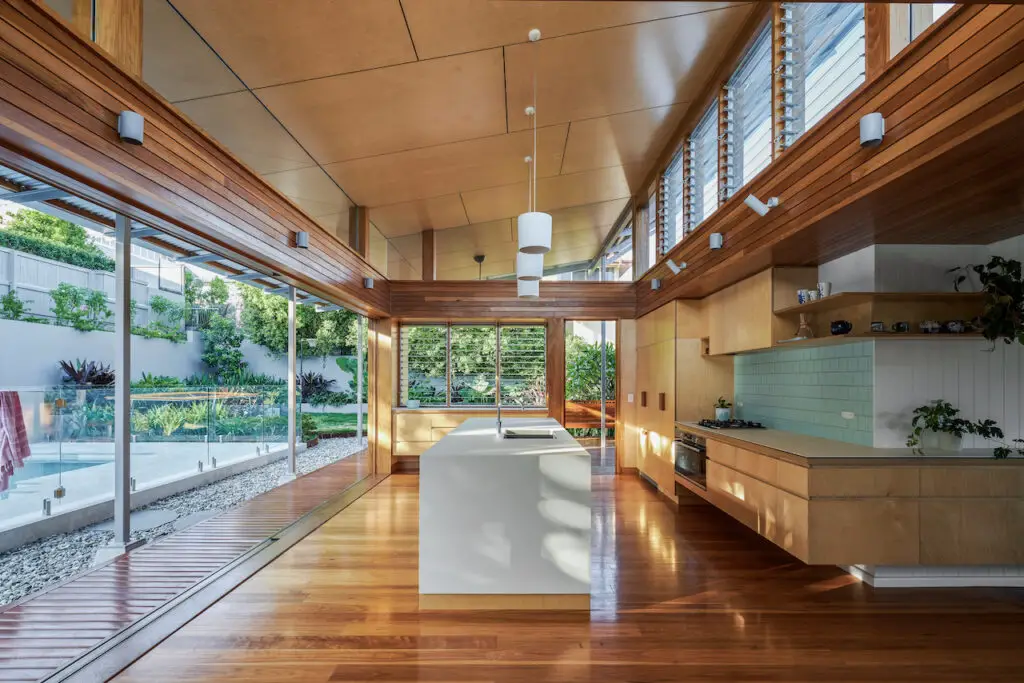
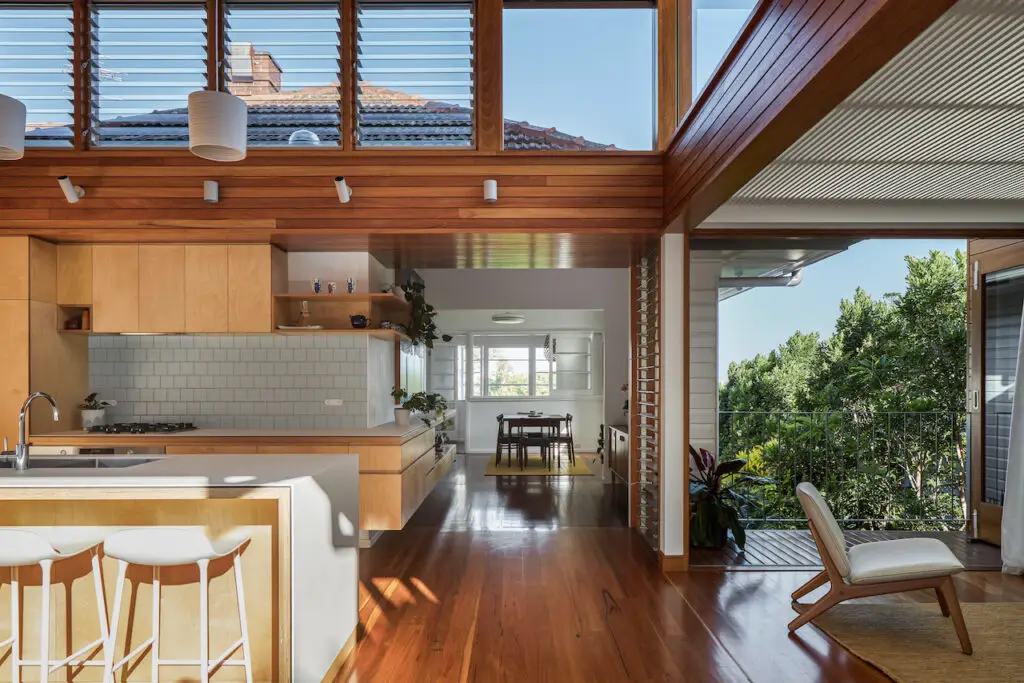
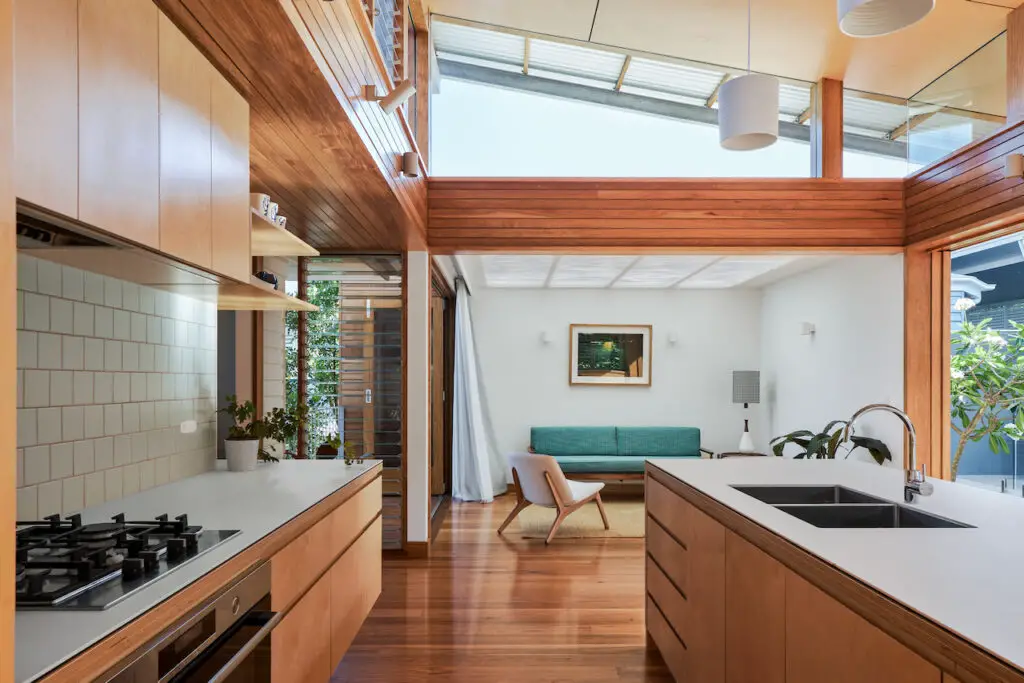
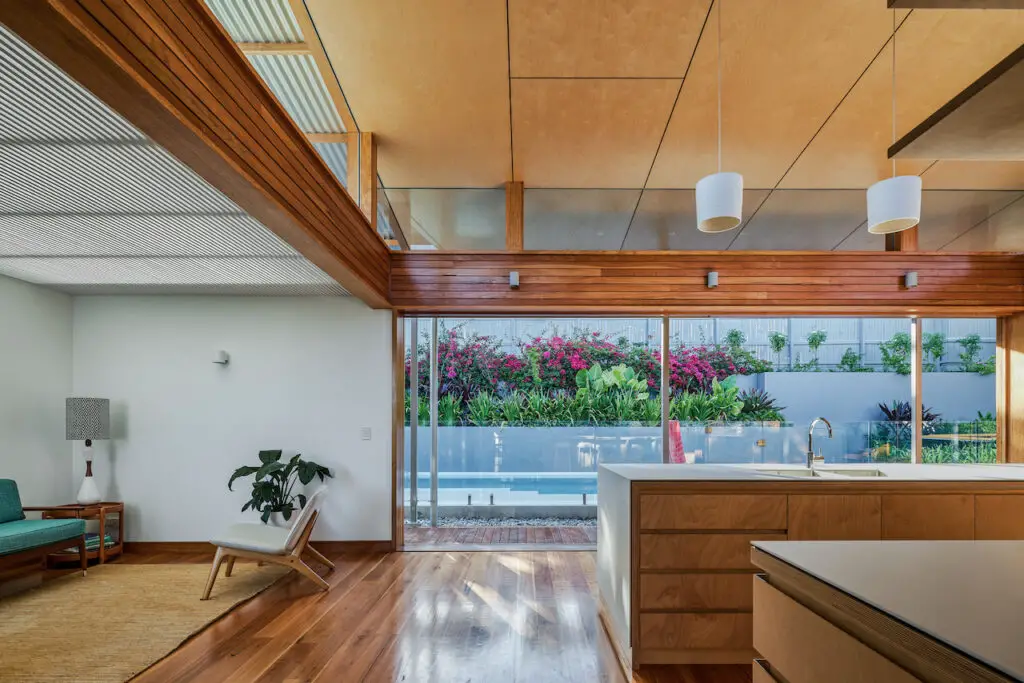
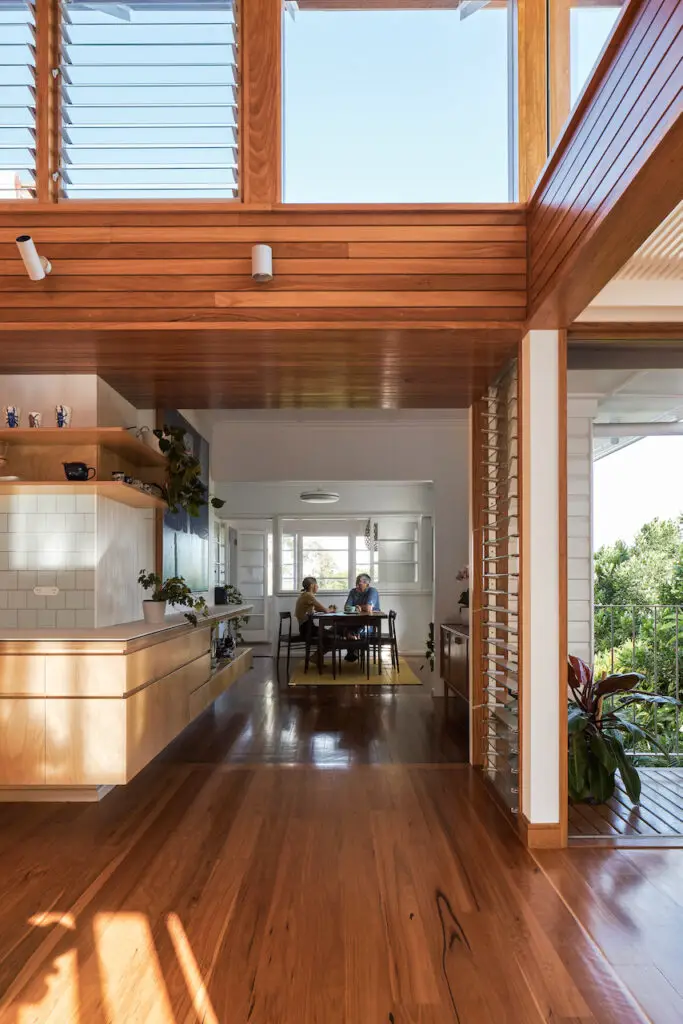
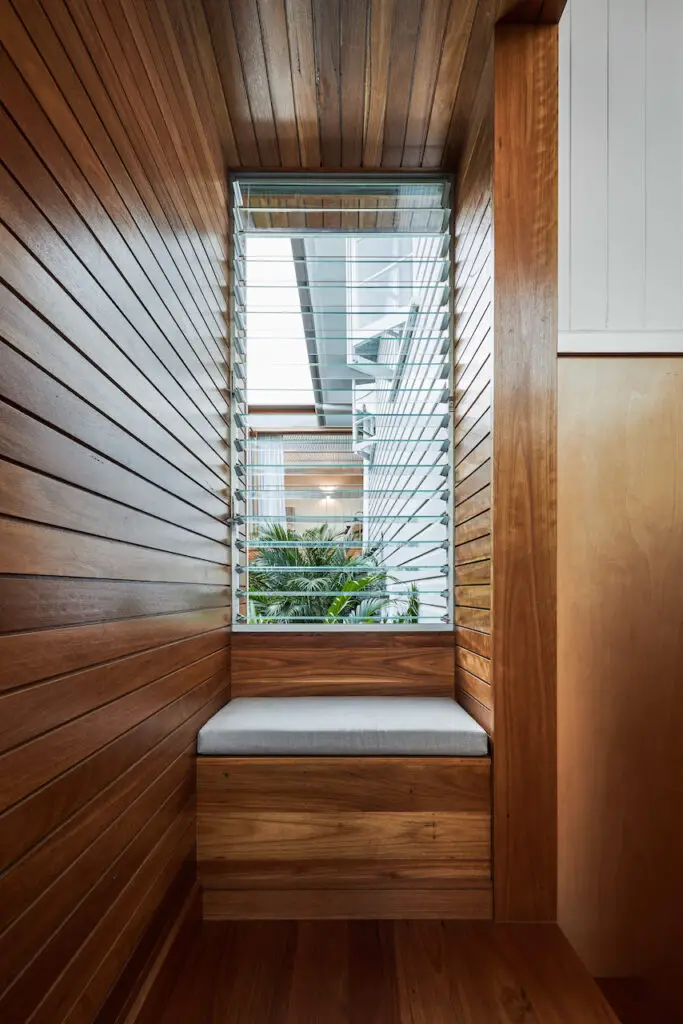
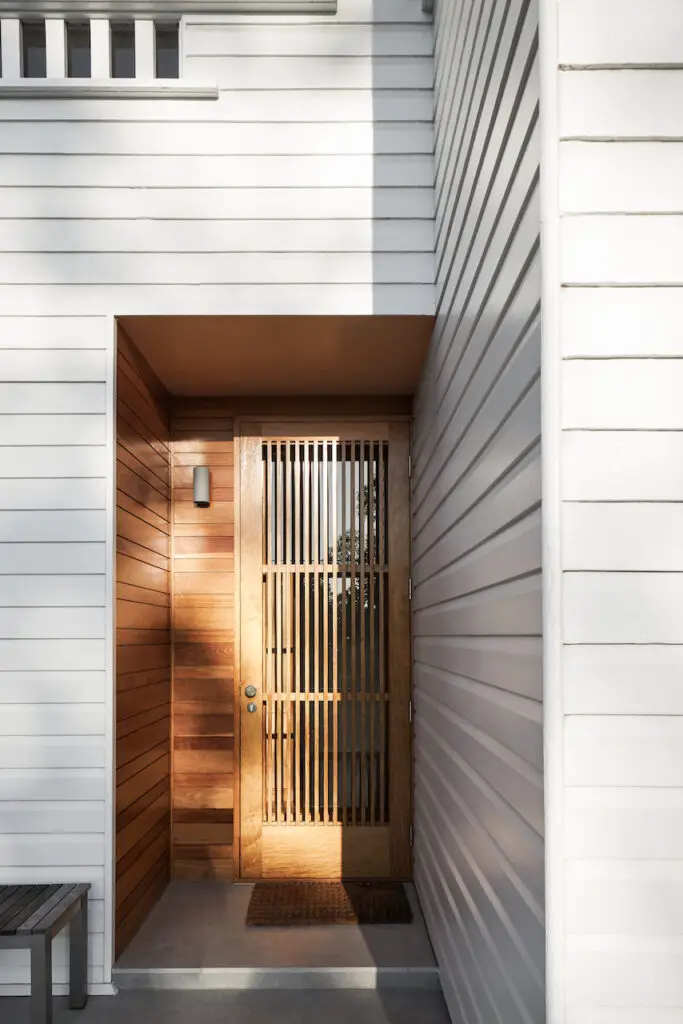
Photos by Andy Macpherson









